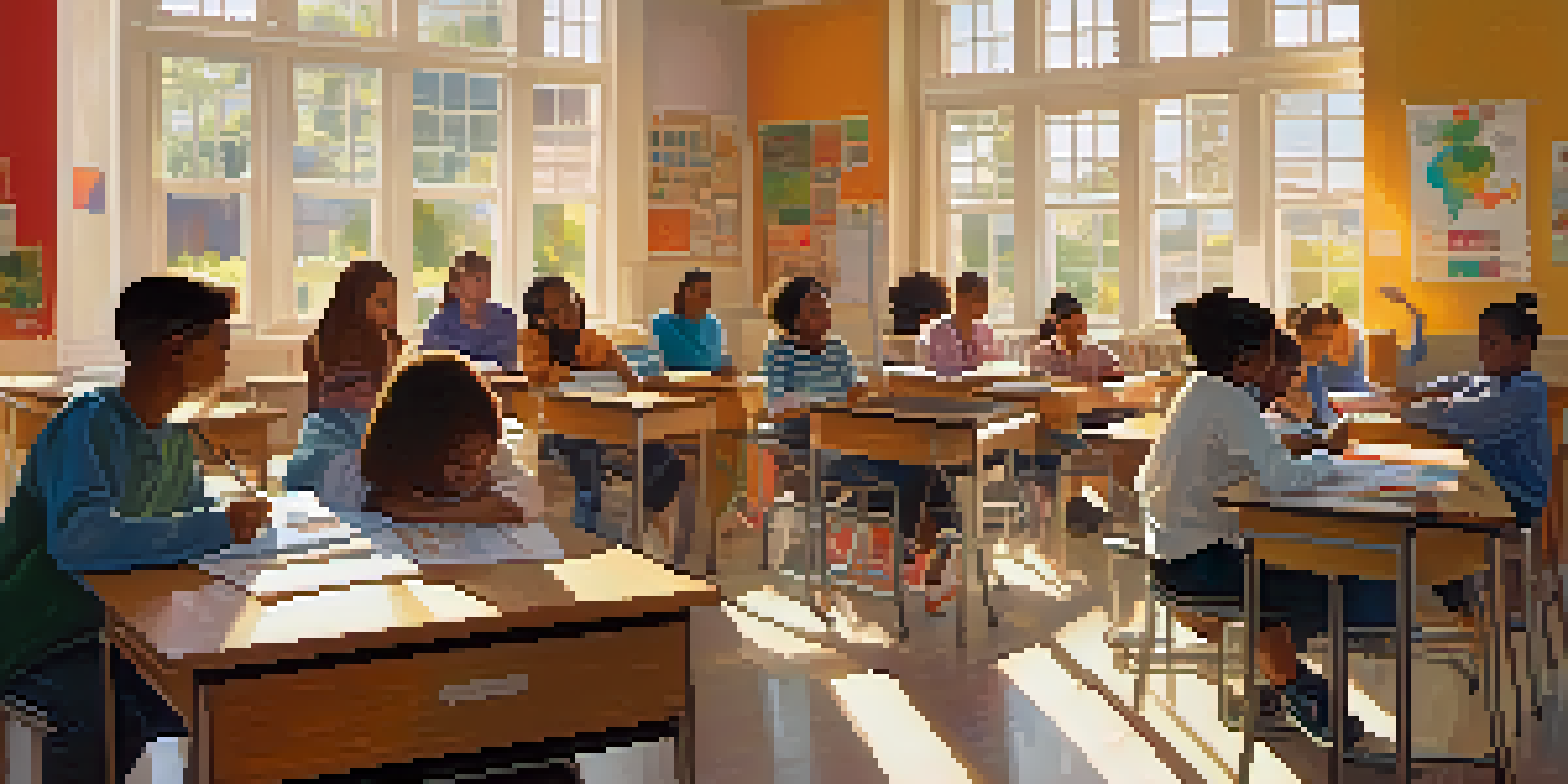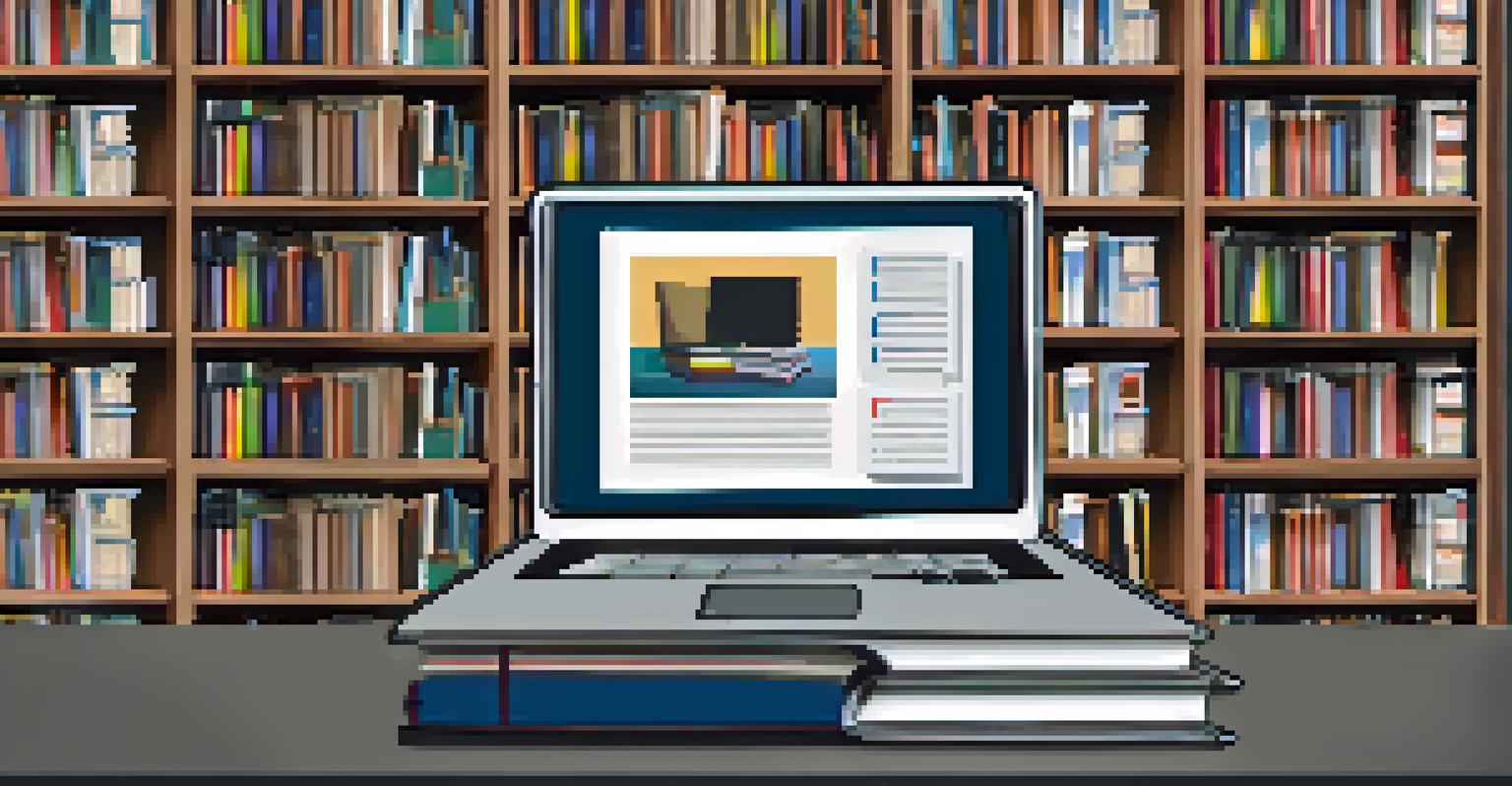OER and Critical Thinking: Enhancing Learner Engagement

Understanding Open Educational Resources (OER)
Open Educational Resources (OER) refer to freely accessible materials that support education. These resources can include textbooks, videos, and entire courses, all designed to enhance learning. The beauty of OER lies in its availability, allowing educators and learners to access high-quality content without financial barriers.
Education is not the filling of a pail, but the lighting of a fire.
By using OER, educators can tailor resources to fit their specific teaching styles and student needs. This flexibility encourages creativity in lesson planning and promotes a more personalized learning experience. For students, it means they have a wealth of information at their fingertips, enabling them to explore topics more deeply.
Moreover, OER fosters collaboration among educators and students alike. By sharing and adapting these resources, the learning community grows stronger, leading to richer discussions and diverse perspectives. In this way, OER not only democratizes access to education but also enhances the overall learning experience.
The Role of Critical Thinking in Education
Critical thinking is the ability to analyze information, make reasoned judgments, and solve problems effectively. It's an essential skill in today's fast-paced world, where information is abundant and often misleading. Encouraging students to think critically equips them with the tools to navigate complex issues and make informed decisions.

In educational settings, critical thinking empowers students to question assumptions, evaluate evidence, and consider alternative viewpoints. This approach not only deepens their understanding of subjects but also prepares them for real-world challenges. By promoting a culture of inquiry, educators can create a more dynamic and engaging learning environment.
OER Enhances Learning Accessibility
Open Educational Resources provide free access to high-quality educational materials, removing financial barriers for both educators and students.
Moreover, fostering critical thinking helps students develop confidence in their abilities. When learners feel equipped to tackle difficult questions and engage in thoughtful debates, they become more active participants in their education. This shift from passive learning to active engagement is key to achieving lasting academic success.
Connecting OER and Critical Thinking
OER and critical thinking complement each other beautifully. By providing diverse materials, OER encourages students to explore multiple perspectives on a topic, fostering critical analysis. This exploration leads to deeper understanding and enhances students' ability to evaluate information critically.
The greatest enemy of knowledge is not ignorance, it is the illusion of knowledge.
For example, an OER textbook might present a variety of case studies on climate change, each offering different viewpoints. Students can analyze these cases, weigh their merits, and form their conclusions based on evidence. This process not only sharpens their critical thinking skills but also makes learning more engaging and relevant.
In essence, OER serves as a catalyst for critical thinking by offering rich resources that prompt inquiry and discussion. When students are encouraged to think critically about the content they consume, they become more engaged learners who take ownership of their educational journey.
Promoting Learner Engagement with OER
Learner engagement is crucial for academic success, and OER plays a significant role in achieving this. By providing a variety of engaging materials, OER addresses different learning styles and preferences. Whether it’s interactive videos, podcasts, or traditional texts, students can choose resources that resonate with them.
Additionally, OER often encourages collaborative learning through group projects and discussions. When students work together to analyze OER materials, they not only deepen their understanding but also build important social skills. This collaborative engagement creates a sense of community that enhances the overall learning experience.
Critical Thinking Empowers Students
Encouraging critical thinking equips students with essential skills to analyze information, make informed decisions, and engage actively in their learning.
Moreover, the flexibility of OER allows learners to take charge of their education. They can access materials anytime and anywhere, fitting their studies into their busy lives. This autonomy fosters motivation and commitment, as students feel empowered to learn at their own pace and explore topics that interest them.
Strategies for Integrating OER into Curriculum
Integrating OER into the curriculum can seem daunting, but it doesn't have to be. Start by identifying areas in your syllabus where OER can replace traditional materials. Look for resources that align with learning objectives and resonate with students' interests to ensure engagement.
Once you've selected OER materials, consider how to incorporate them into lessons. This might involve creating discussion prompts, group activities, or reflective assignments that encourage critical thinking. By actively involving students in the learning process, you can enhance their engagement and understanding.
Finally, don’t forget to gather feedback from your students. Understanding how they interact with OER can provide valuable insights into what's working and what could be improved. This iterative process allows you to refine your approach and ensure that your use of OER continues to foster critical thinking and engagement.
Assessing Critical Thinking Skills Through OER
Assessment is a vital part of education, especially when it comes to measuring critical thinking skills. OER provides various tools and frameworks that educators can use to assess how well students are developing these skills. From quizzes to open-ended projects, the options are plentiful.
For instance, educators can design assessments that require students to analyze OER content and present their findings. This approach not only tests their understanding but also encourages them to think critically about the material. Additionally, peer assessments can be incorporated, allowing students to evaluate each other's work and deepen their analytical skills.
OER Fosters Engagement and Collaboration
By offering diverse materials and promoting collaborative learning, OER enhances student engagement and creates a sense of community in the educational experience.
Moreover, encouraging self-assessment can be highly beneficial. When students reflect on their learning process and outcomes, they become more aware of their critical thinking development. This practice fosters a growth mindset, motivating learners to continuously improve and engage more deeply with their education.
Future Trends in OER and Critical Thinking
As education evolves, so too does the role of OER and critical thinking. With advancements in technology, we can expect even more interactive and engaging OER materials to emerge. These innovations will continue to support educators in fostering critical thinking skills among students.
Moreover, the increasing collaboration between educators and institutions will likely lead to a more robust pool of OER. This collaboration can create a rich tapestry of resources that addresses diverse learning needs and promotes critical engagement. As a result, students will have access to a wealth of materials that challenge and inspire them.

Ultimately, the future of OER and critical thinking looks promising. As we embrace these trends, we can enhance learner engagement and equip students with the critical skills necessary for success in a rapidly changing world. By continuing to prioritize these elements, we can create a more vibrant and effective educational landscape.